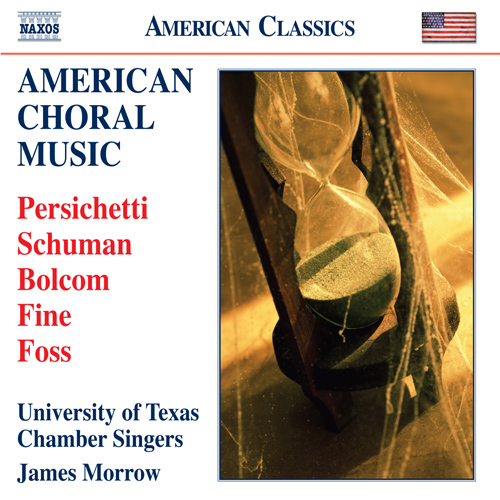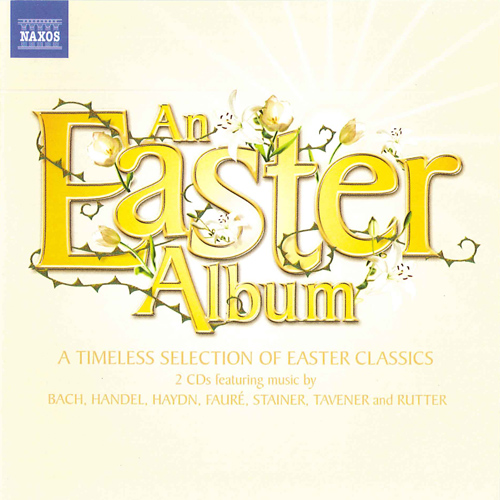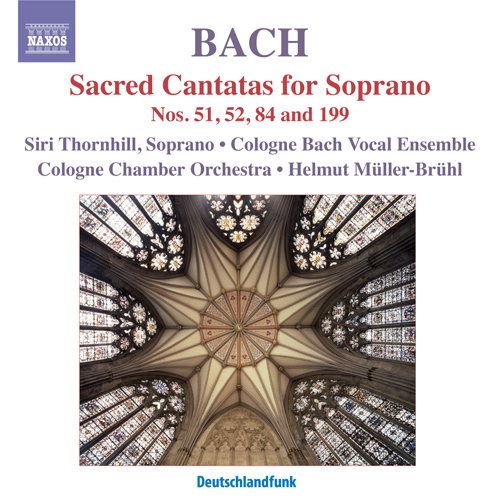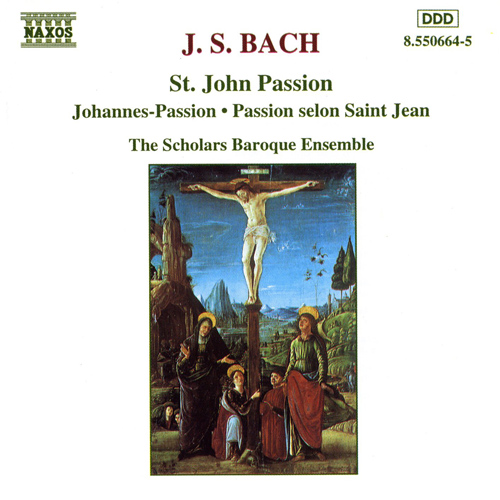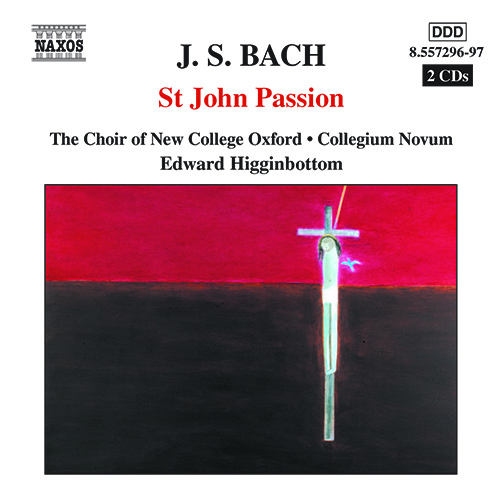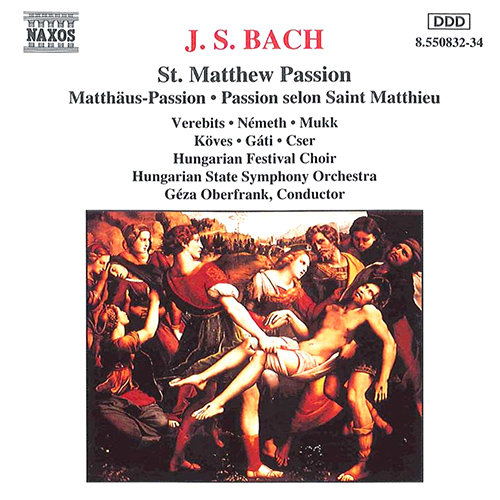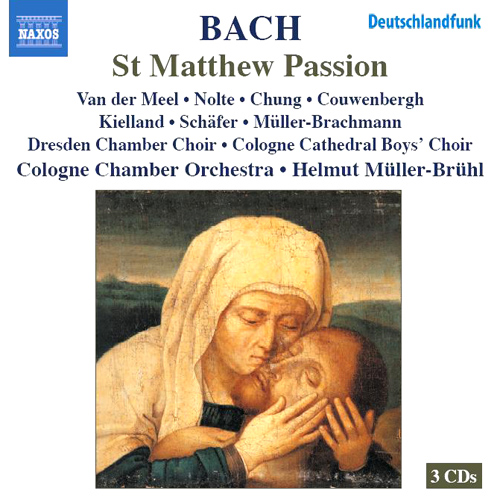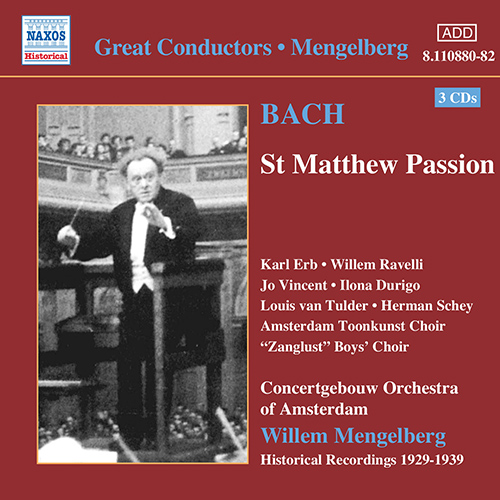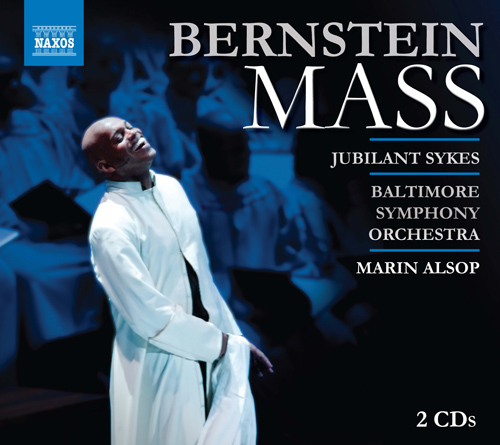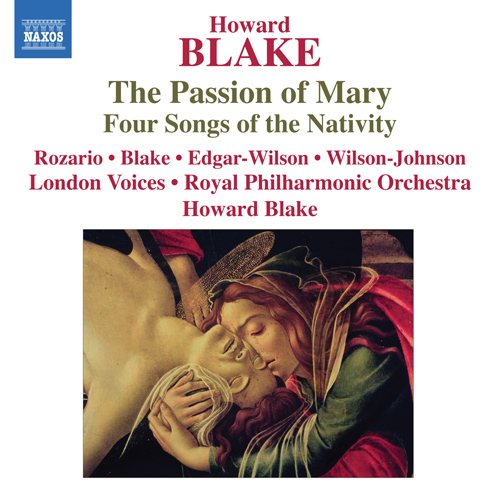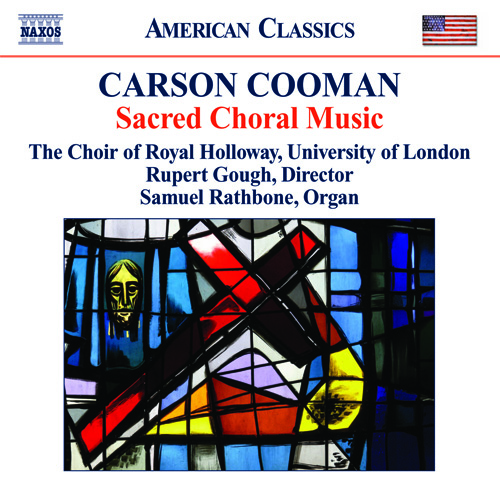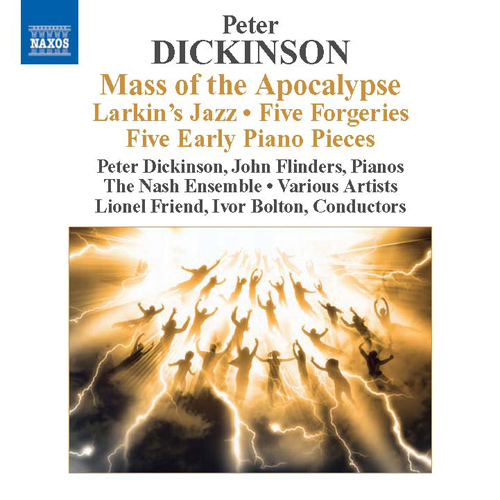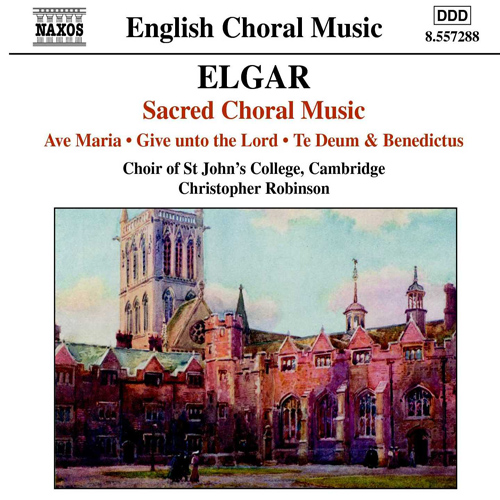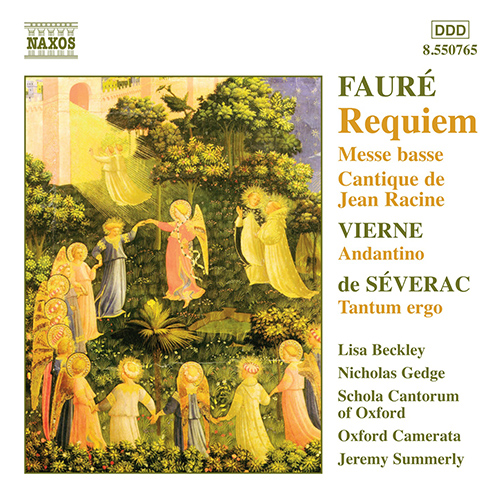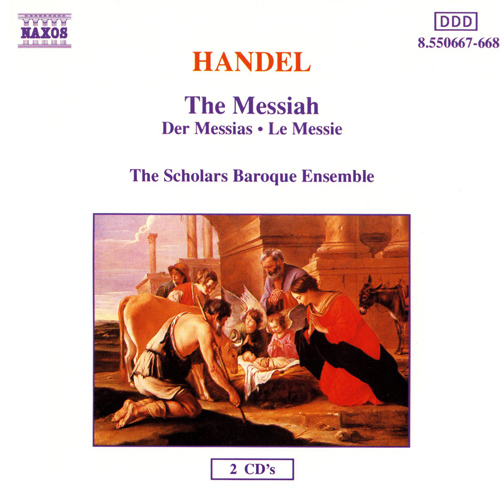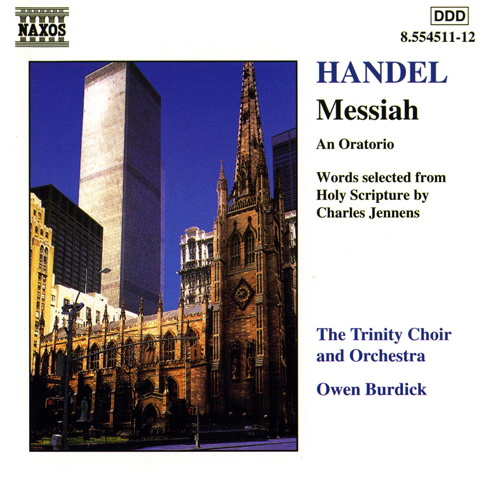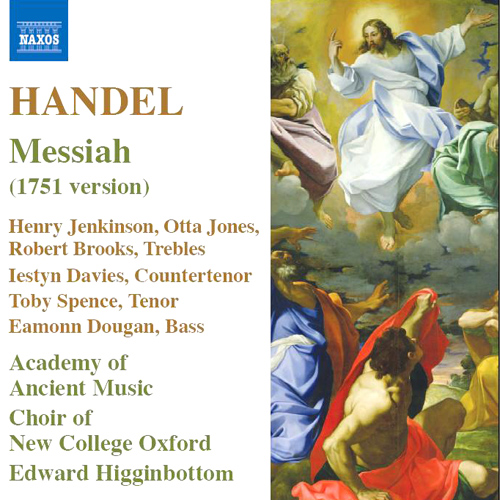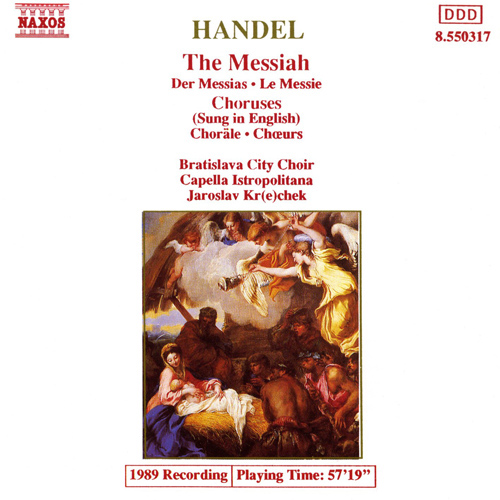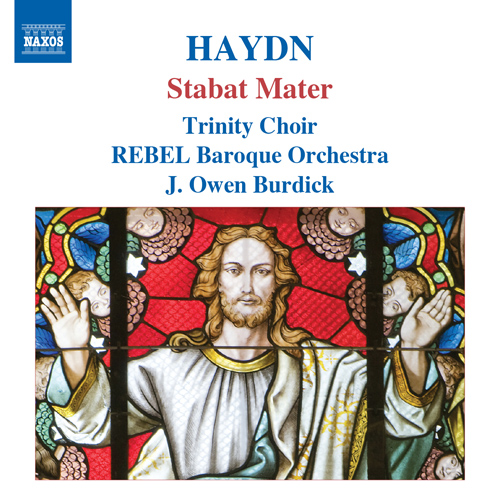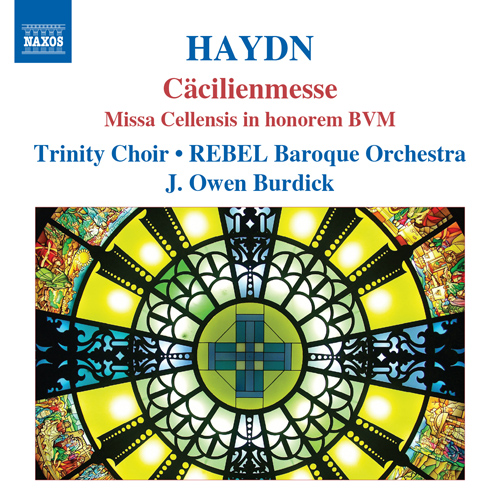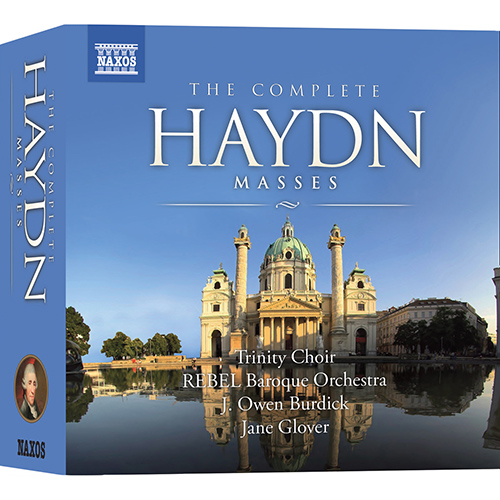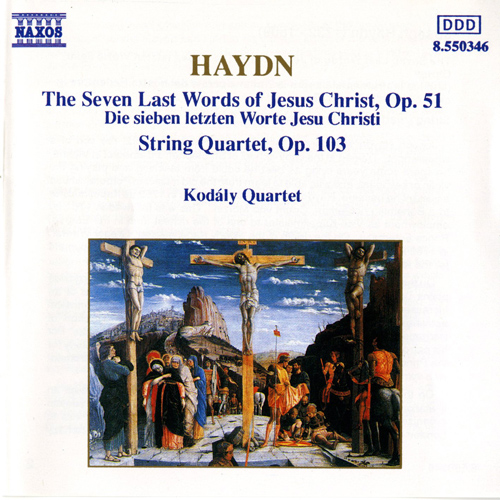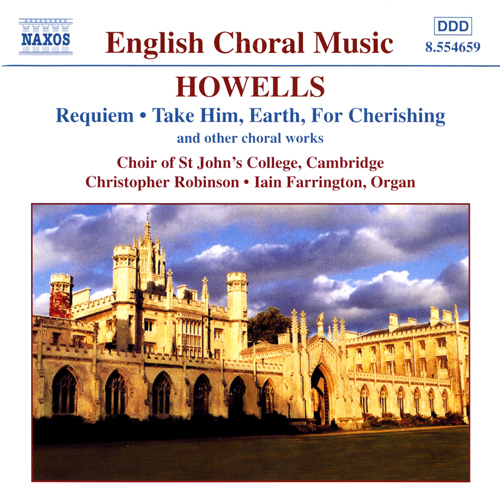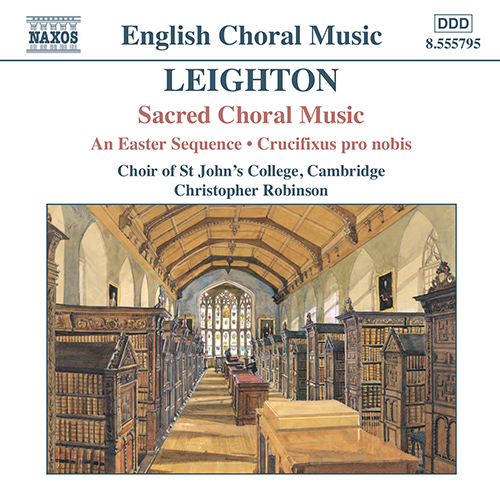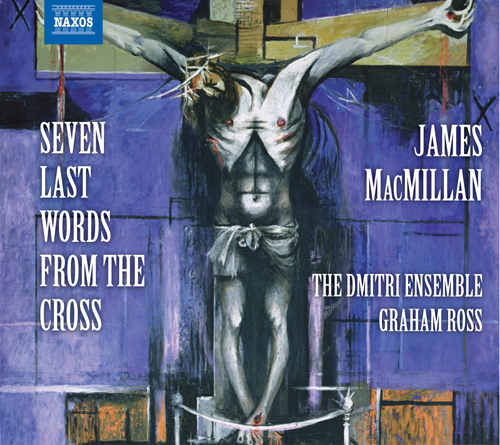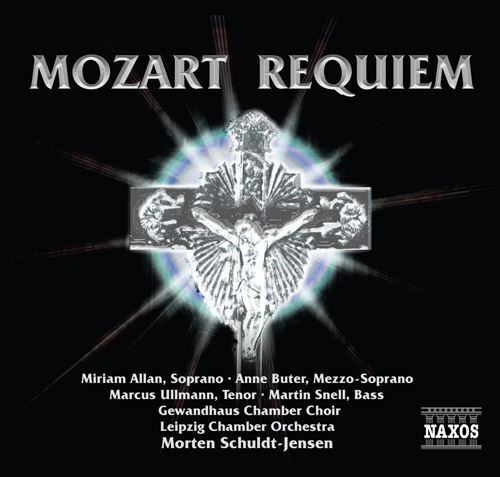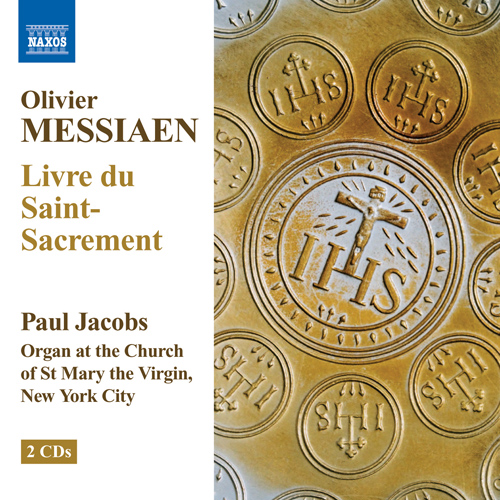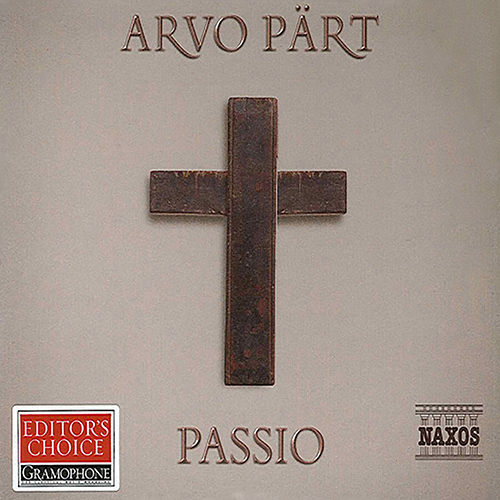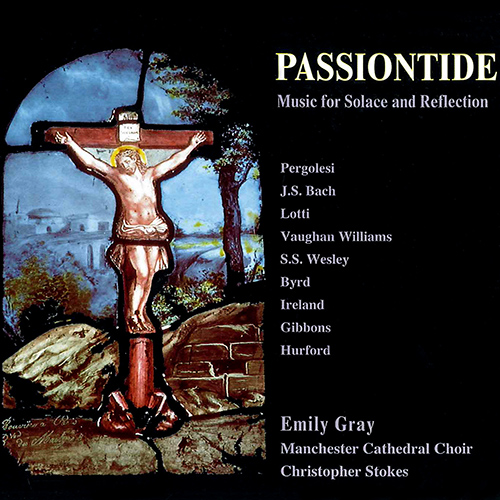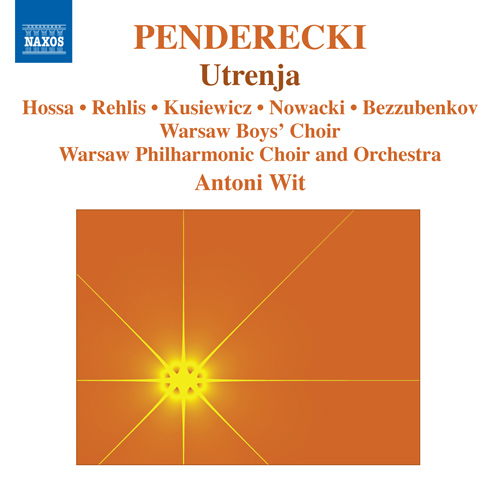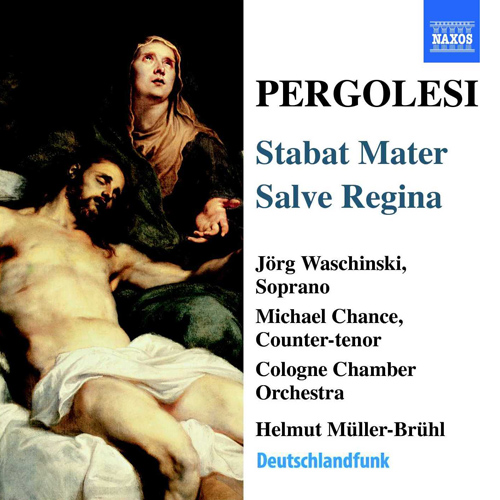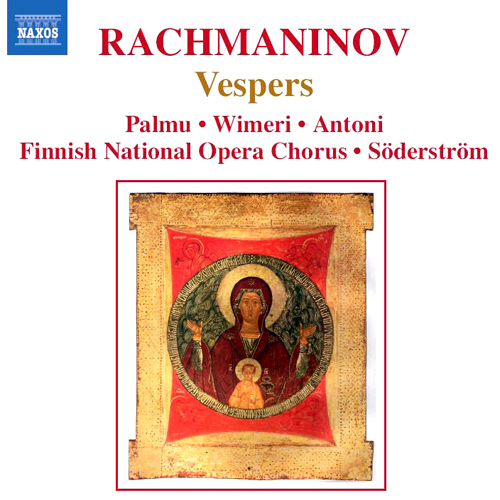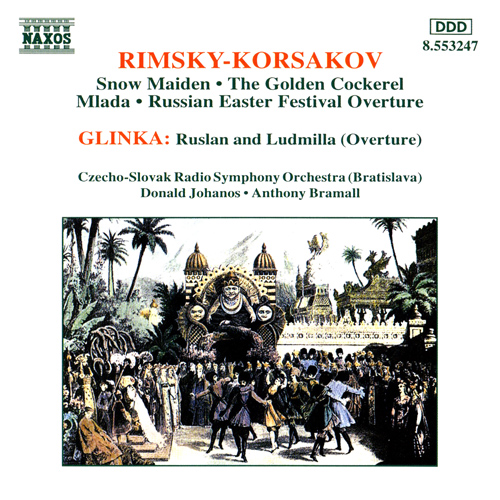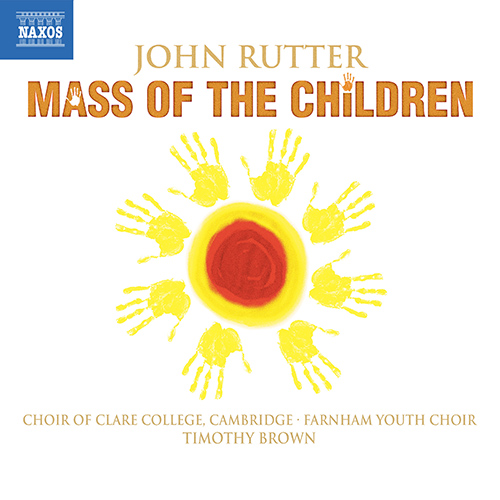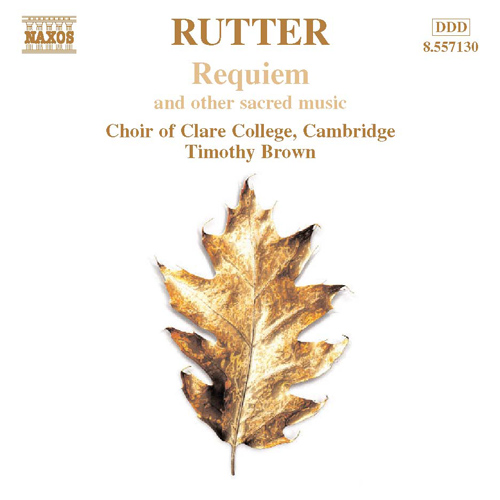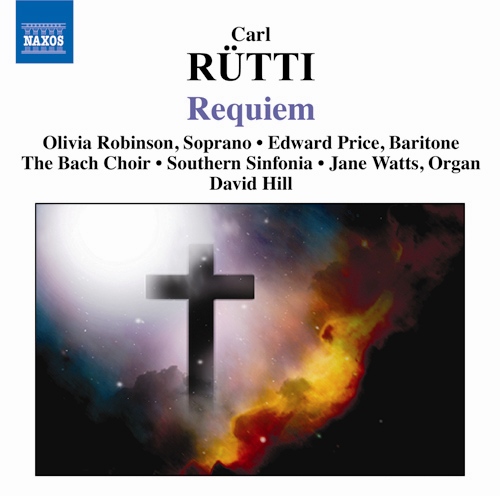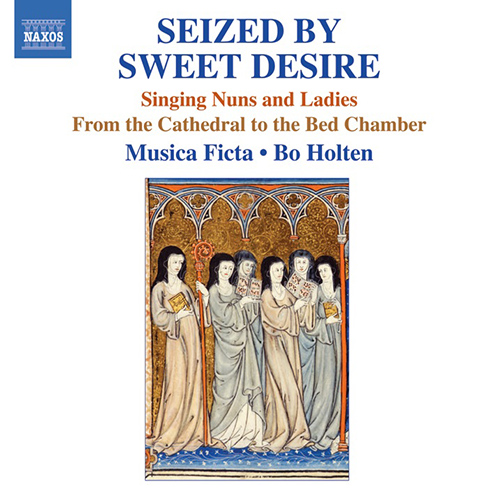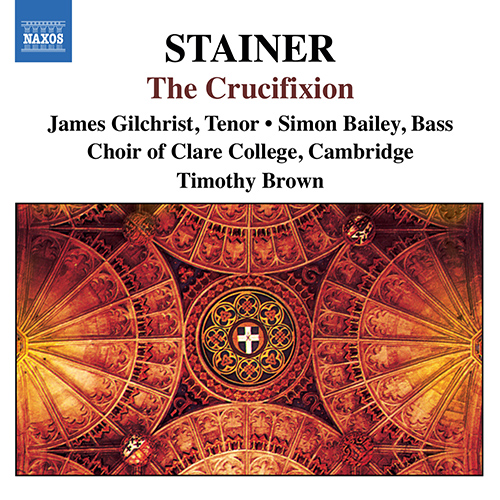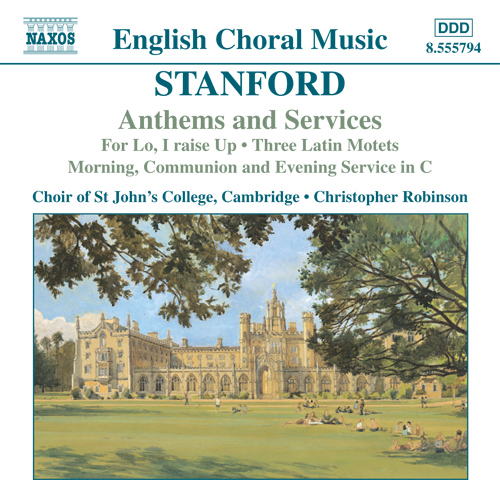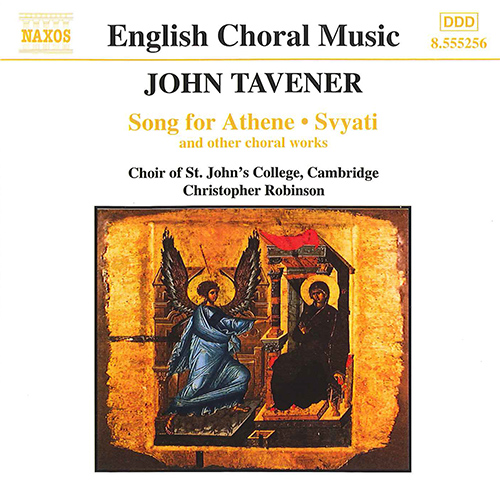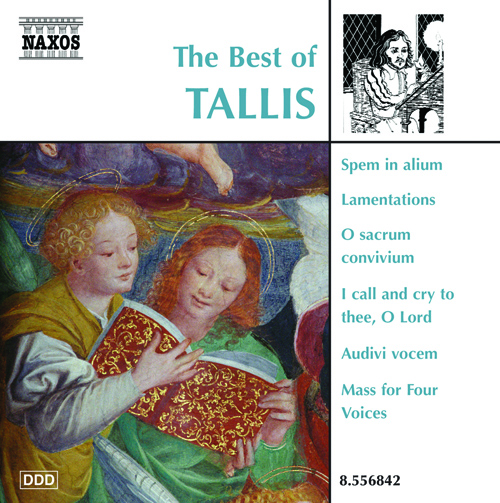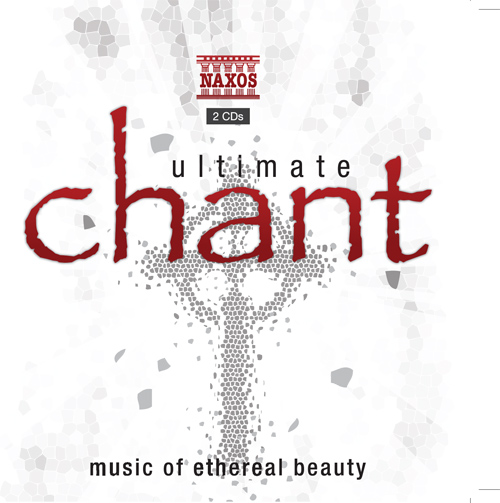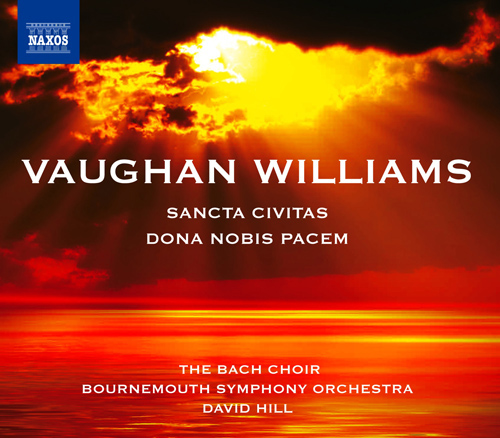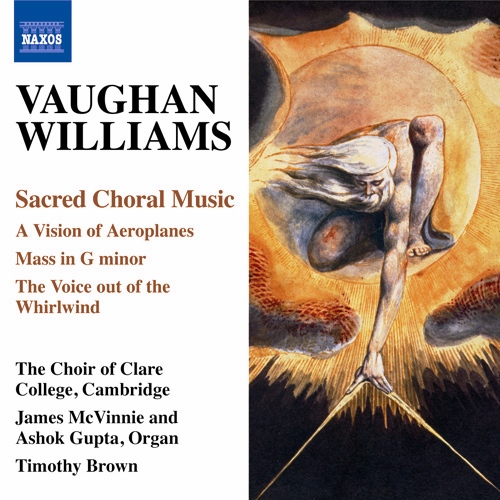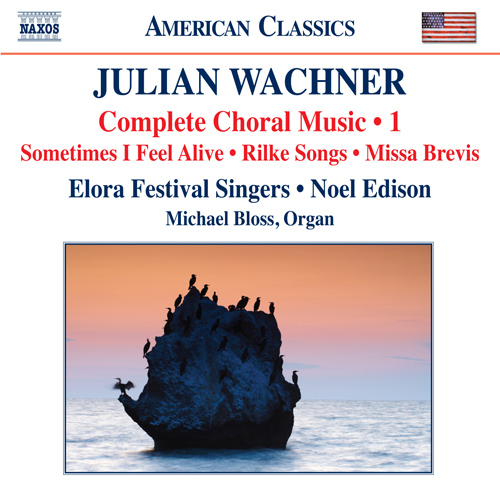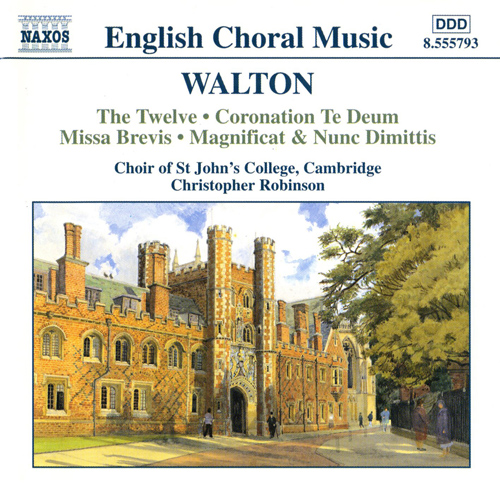As the most important feast in the Christian liturgical calendar, Easter is also a time to experience great music devoted to the Crucifixion and Resurrection of Christ. Here are some highlights from Naxos’s extensive catalogue.
Vincent Persichetti (1915–1987) Mass
William Schuman (1910–1992) Carols of Death
William Bolcom (b. 1938) The Mask
Irving Fine (1914–1962) The Hour-Glass
Lukas Foss (1922–2009) Psalms
This 2-CD set brings together some of the most beautiful and moving music for Easter: Edward Miller’s When I survey the wonderous cross, the Lacrimosa and Confutatis from Mozart’s Requiem, Bach’s O sacred head sore wounded, the lovely Largo from Vivaldi’s Spring (The Four Seasons), the opening duet from Pergolesi’s Stabat Mater, the Sinfonia from Bach’s Easter Oratorio, I Know that My Redeemer Liveth and the Hallelujah Chorus from Handels’ Messiah, the Introduction from Haydn’s The Seven Last Words of Jesus Christ, Ruht wohl, ihr heiligen Gebeine from Bach’s St John Passion, Gibbons’s Drop, drop slow tears, Palestrina’s Lesson I for Maundy Thursday, Dunstable’s Veni Sancte Spiritus – Veni Creator, Gregorian Chant, Ireland’s My song is love unknown, God so loved the world and Litany of the Passion from Stainer’s The Crucifixion, the Pie Jesu from Fauré’s Requiem, Elgar’s Ave verum corpus, excerpts from Rachmaninov’s Vespers, Rimsky-Korsakov’s Russian Easter Festival Overture, the opening of Pärt’s Passio Domini Nostri Jesu Christi secundum Joannem, Christ in his Passion from Leighton’s Crucifixus pro nobis, excerpts from Tavener’s The Protecting Veil, and The Lord is my shepherd from Rutter’s Requiem.
Among J.S. Bach’s 200 or so surviving church cantatas, these four for solo soprano include the popular Jauchzet Gott in allen Landen!, in which singer and solo trumpet engage in thrilling displays of virtuosity. In the other cantatas, Bach provides equally beautiful obbligato parts for violin, viola and oboe, whose interactions with the soprano heighten the emotional significance of the sacred texts. For the opening sinfonia of the most richly-scored cantata here, Falsche Welt, dir trau ich nicht, Bach makes use of a version of the first movement of his Brandenburg Concerto No. 1.
“This is in many ways an attractive St John Passion. It is young and fresh-sounding, and is especially effective (often beautiful) in its choruses” (Gramophone)
“These discs make an outstanding bargain.” (Classic CD)
“This is a very special recording. Not only is it of quite outstanding quality both musically and dramatically, but, being sung entirely by male voices associated with a single institution (all the soloists are past or present members of New College Choir), it probably comes as close as modern conditions permit to a sound that Bach would have recognised.” (The Telegraph)
Available in the UK only
“A refreshingly lithe and young sounding Evangelist, Jósef Mukk, leads a team of Hungarian soloists with fresh clear voices” (Penguin Guide)
BACH St Matthew Passion (Highlights)
8.553198
Favourite arias and choruses from the above 3-CD set on a single disc.
“Muller-Bruhl’s tempos are apt, the overall tone vibrant, the pacing and flow sensible and engaging as in any of the better [period instrument] performances on disc…the choral work is outstanding” (Classics Today)
“Naxos provides an unexpectedly rich sound-frame, quite amazing given the year. There are times when Mengelberg’s (truncated) Bach Passion sounds almost as Wagnerian as Furtwangler’s Tristan, rapt one moment, explosively emotional the next, but its narrative impact holds you captive.” (The Independent)
Not available in Australia, Singapore or the USA
When Leonard Bernstein was asked by Jacqueline Kennedy Onassis to compose the inaugural work for the opening of The John F. Kennedy Center for the Performing Arts in Washington, D.C., he wrote: “The Mass is also an extremely dramatic event in itself—it even suggests a theater work.” Premiered on September 8, 1971, with additional words by Stephen Schwartz of Godspell fame, Mass is a remarkable, visionary work with a kaleidoscope of musical styles that touches on themes of political protest, existential crisis and religious faith lost and found.
Howard Blake is a popular and prolific composer whose output includes film scores (not least the extraordinarily successful The Snowman), choral, orchestral and instrumental works, ballets and opera. This disc presents the world première recordings of Four Songs of the Nativity, commissioned by The Book Club for The Bach Choir and London Brass, and Blake’s second dramatic oratorio, The Passion of Mary, commissioned by The Summer Music Society of Dorset in association with South West Arts. ‘The Passion of Mary draws together the Stabat Mater, the Magnificat, the Salve Regina and other Marian and Nativity texts with the wisdom of a Berlioz. The outcome is a splendid, highly accessible choral work.’ Roderick Dunnett (reviewing the London première for Church Times)
Described by Choir and Organ Magazine as ‘[music] to enliven the programmes of choirs anywhere’, the sacred choral works of American composer Carson Cooman have been widely performed and commissioned. This disc includes a sampling of the music, broadly organised by the structure of the liturgical year. Ranging in character from the exuberance of New World Carols: An American Christmas Triptych and Easter Triumph! Easter Joy!, to the mystical Trinitarian contemplation of Be Present, Holy Trinity, Cooman’s music creates a sense of ‘sacred space’ in its settings of both familiar and unfamiliar texts from all eras. Under the direction of renowned organist and conductor Rupert Gough, the Choir of Royal Holloway delivers insightful performances of this repertoire.
Peter Dickinson weaves together musical styles popular and classical, past and present, using a technique of ‘style modulation’. In his Mass of the Apocalypse the Book of Revelations’ visions of a new heaven and earth interact with the liturgical text. The music of Sidney Bechet and Bix Beiderbecke played at Philip Larkin’s memorial service suggested the means for him to set the words of the great British poet, himself a jazz critic. His Five Forgeries spoof the styles of famous composers, while the other works showcase different aspects of his many-sided talent. Jennifer Bate’s recording of Dickinson’s complete solo organ works is available on Naxos 8.572169.
Elgar’s sacred choral music possesses the same innate qualities so admired today in his orchestral music, namely an unerring sense for musical development and drama allied to a glorious ear for melody. This collection follows him from early settings for the Catholic liturgy, such as the three Opus 2 anthems written after he had succeeded his father as organist at St George’s in Worcester, right through to his heyday as the Empire’s best-known composer, commissioned to write powerful settings such as Give unto the Lord for St Paul’s Cathedral in 1914. Great is the Lord of 1912 is considered his sacred masterpiece.
Fauré’s Requiem is generally known as a concert piece for large choir and full orchestra. The original instrumentation was, however, quite different, in some performances using a choir of around thirty singers accompanied by four violas, four cellos, solo violin, and organ. The performance presented here uses the work’s original instrumentation whilst including all seven movements of the finished Requiem. It is based upon the edition prepared by Denis Arnold in 1983 for Schola Cantorum of Oxford which was subsequently performed at St Louis-des-Invalides in Paris in July 1984.
“Certainly anyone on a budget who wants a period instrument version need look no farther.” (Fanfare)
HANDEL Messiah (Highlights)
8.553258
Favourite arias and choruses from the above 2-CD set on a single disc.
“Owen Burdick and the Trinity Choir and Orchestra have made a recording that brilliantly captures the drama and piercing beauty of the oratorio. The soloists are drawn from the choir, and their strong, young voices are excellent.” (CDNow – 10 Essential Handel Albums)
“To recreate what Handel did two and a half centuries ago, Higginbottom selected three boys from the Choir of New College, Oxford, of which he is music director (for the tenor and bass soloists, he chose Toby Spence and Eamonn Dougan, both former clerks of the New College Choir). The result is something quite unexpectedly triumphant: Quicksilver fast, and sparkling with jewel-like clarity, with a musical swing and a youthful exuberance that makes even the most stylistically alert and energetic of its competitors seem lead-footed by comparison. There is a moderate amount of embellishment which is elegant and delicious by turn, but never becoming so obtrusive as to distract from Handel’s magnificent musical core. The choruses are a constant delight: His yoke is easy and All we like sheep are so brilliant with an infectious sense of sheer joy.” (Audiophile Audition)
Bratislava City Choir occupies a unique position in the cultural life of the Slovakian capital, with its long musical traditions. The choir has enjoyed the services of conductors of great distinction during the twenty years. Capella Istropolitana has been widely praised for its many Naxos recordings.
Together with the Missa Cellensis (8.572122), the Stabat Mater (1767) was one of the first sacred works that Haydn composed in his new position as Kapellmeister of the Esterházy court. The Virgin Mary’s vast range of emotions during the Crucifixion are reflected in Haydn’s music through various musical techniques, including word-painting and even subtle elements of characterisation. Performed in Vienna in 1768, the Stabat Mater became Haydn’s most popular sacred work and was circulated widely in his lifetime.
The Missa Cellensis (or Cäcilienmesse) was Haydn’s first Mass setting for his new employers at Eszterháza. In common with his Stabat Mater (8.572121), Haydn draws upon the wealth of musical styles and traditions associated with the Viennese Mass. Scored for strings, oboes, bassoon, trumpets, timpani and organ, plus soloists and choir, the work may originally have comprised the Kyrie and Gloria alone, with the other sections added in the mid-1770s. The final version, heard here, triumphantly concludes at ‘Dona nobis pacem’ with a grand fugue.
Today Haydn is viewed mainly in the light of his string quartets and symphonies, yet his first and last compositions were Mass settings. They encompassed an extraordinary musical output, within which his Masses shine as uplifting and deeply satisfying sacred works. Whilst acknowledging the Viennese traditions of church music, these Masses are infused with the kind of inspiration and originality that make Haydn an undisputed master in so many genres.
In 1786 Haydn had been invited by a canon of Cádiz to provide music for a Lenten devotion in a grotto church. The original version of Haydn’s remarkably varied slow movements was scored for orchestra. The work had wide currency throughout Europe and was instrumental in establishing Haydn’s international reputation. In 1796 he devised a choral version, having overheard a similar arrangement which he did not find entirely satisfactory. Haydn made the version for string quartet three days after completing the fuller orchestral version in February 1787.
Herbert Howells is widely regarded as among the most gifted English composers of the generation to succeed Elgar, Vaughan Williams, Holst and Delius. In 1936 Howells suffered the sudden death of his nine-year-old son Michael through polio, a harrowing event which understandably left its mark on the man and his music. From here on, the intense spirituality of Howells’ music took on a more profound depth. The Requiem is a work of immense depth and a rapt, hushed intensity. The text deserves comment in that only two movement uses the traditional words of the Requiem as Verdi or Mozart employed them. Otherwise it is entirely in English, based around Psalm texts.
Kenneth Leighton’s distinctive compositional voice is characterised by rich, lush harmonies, subtle dissonance, rhythmic energy and a lilting, angular lyricism. Pithy thematic ideas and syncopated rhythms are allied to a brilliant mastery of counterpoint and a unique sense of melody borne of a lifelong love of hymns, chorale and chant. This collection features the two contrasting Canticle Settings, the Easter Sequence scored for boys’ voices, organ and trumpet (played here by Crispian Steele-Perkins) and Crucifixus pro nobis, the austere, miniature masterpiece of a Passion setting for tenor, choir and organ which climaxes with one of English choral music’s remarkable icons “Drop, drop, slow tears”.
“In recent years it has been an enormous thrill hearing my music being performed by The Dmitri Ensemble. This excellent, young ensemble brings a breath of fresh air to music making in this country, and are fortunate to have in their director Graham Ross one of the most exciting new musicians to appear on the radar. I am honoured and thrilled that they are choosing to mark my 50th birthday with this disc on Naxos, bringing together a number of different choral works from 1993 to 2005.” – James MacMillan
At his premature death in the early hours of 5th December, 1791, Mozart left his final masterpiece unfinished and shrouded in mystery. It had been commissioned by a ‘grey messenger’ whose ghostly apparition convinced the sick and impoverished composer that he was being told to write his own musical epitaph. This and the myth of his being poisoned by the jealous Salieri became the stuff of legend in the 19th century, and inspired an opera, a play and a film in the twentieth century. The Requiem remains one of the most personal, impassioned and profound of Mozart’s works.
Livre du Saint-Sacrement (The Book of the Blessed Sacrament, 1984), is Messiaen’s last, and longest work for the instrument. Officially written on a commission from Ray Ferguson for the 1986 convention of the American Guild of Organists (AGO) in Detroit, Michigan, the genesis of the work actually dates back to 1980, when, in the midst of work on Saint-François, Messiaen had planned a series of short études for the organ. The conception evolved into a thematic cycle based on the sacrament of Communion around 1981, with the final version of the work comprised of eighteen movements (many based on his recorded improvisations) arranged into three thematic groups. Movements 1–4 represent acts of adoration before Communion, 5–11 depict events in the life of Christ, and 12–18 reflect on aspects the sacrament itself.
Settings of the Passion are part of an ancient tradition within the Church in which all four Gospel accounts of the Passion are sung to plainchant in Holy Week. In his setting, Arvo Pärt eschews word-painting and mood-setting, and instead returns to the neutrality of the Latin translation, with each part allocated a certain constant set of notes and durations throughout. Even the silences between sections have a precise duration specified by the number of syllables in the final word of the preceding sentence, and this is the first recording of Passio to take account of the composer’s recent clarification of that particular rule.
Passiontide contains well-known vocal & choral favourites such as Mendelssohn’s Hear My Prayer (which includes the beautiful O for the Wings of a Dove), and selected movements from Pergolesi’s much loved Stabat Mater. At the time of this recording, fifteen-year-old Emily was the runner up in the “Young Voice of the Year” competition held in Birmingham in 1999. She was a finalist in the BBC Radio 2 Young Chorister of the Year competition in 1998 and 1999 and won the prestigious title of BBC Radio 2 Choirgirl of the Year in October 2000. Her title has led to many live and recorded broadcasts for local and national radio (Radio 4 Daily Service, Radio 2 Sunday Half Hour, Good Morning Sunday) and television (BBC 1’s Songs of Praise, Look North). To complete the album, Emily sings one of her favourite works Peter Hurford’s Litany to the Holy Spirit.
Penderecki’s Utrenja was inspired by the Orthodox liturgy for Holy Saturday with its focus on the lamentation of Christ’s death and the Easter Sunday morning service commemorating the Resurrection. The composer remarks that ‘Utrenja is a combination of pure, a cappella vocal writing and orchestral effects (for strings and percussion) very much connected with electronic music’. Enthusiastically received by audiences, it stands beside his Polish Requiem (8.557386–87) and St Luke Passion (8.557149) as one of the towering masterpieces of modern Polish music.
The 18th-century French writer, Charles de Brosses described Pergolesi’s Stabat Mater, completed as the composer lay dying, as ‘the master work of Latin music’. Although this is music of great tenderness and sombre beauty, the work also includes chromatic sequences, sighing passages and dramatic dissonance straight out of the operatic style that had first made Pergolesi famous. Pergolesi’s Salve Regina in C minor, also from the composer’s last few months, is written in a similarly expressive style.
Written during Rachmaninov’s most creative period, which culminated in the Second and Third Piano Concertos, the 1915 All-Night Vigil, popularly known as Vespers, is a masterpiece of 20th-century sacred music. Inspired by the Saturday All-Night Vigil celebrated in the Russian Orthodox Church, Rachmaninov’s setting is remarkable for its melodic invention, choral virtuosity and Slavic intensity.
Rimsky-Korsakov’s own Russian Easter Festival Overture, written in 1886, avowedly orchestrated in the style of Glinka, is based on liturgical themes, a description that does little justice to the lyricism and excitement of the work, seen rather as a fantasy than a formal overture. The program of the work is explained by the inclusion of quotations from Psalm LXVIII and from St Mark’s account of the Passion in the score.
Bringing together the voices of adults and children, Rutter’s Mass of the Children is scored for mixed choir, soprano and baritone soloists, orchestra, and the irresistible charm of a children’s choir. Rutter’s skillful writing for these forces together with his sensitive interweaving of both the Latin Mass texts and Thomas Ken’s renowned morning and evening hymns for Winchester College, gives the whole work the framework of a complete day, from waking to sleeping. This has resulted in one of his finest and most moving works to date.
Produced by the composer himself, this is the first recording of the ensemble version of John Rutter’s radiant Requiem. Written in 1985, the work is not a conventional setting of the Requiem Mass but comprises a personal selection of texts from the Catholic liturgy and the 1662 Book of Common Prayer. John Rutter maintains intimate ties with Clare College and some of his anthems are left as a musical legacy to the college. Among these are two simple, tender blessings: Go forth into the world in peace, dedicated to the choir on the eve of its first tour to America; and A Clare Benediction, written as a gift to Rutter’s alma mater. This recording is dedicated to the memory of Christopher Rutter.
Carl Rütti’s choral music is ‘sensuous and exuberant by turns, combining dazzling rhythms and soaring melodies with distinctively lush harmonies’ (Choir & Organ magazine). Of his Requiem, immense in scale yet often intimate in tone, the composer writes that ‘no words are strong enough to express the feelings of the bereaved, nor sufficient to explain what will await us after death. Music may be the most appropriate language’. Scored for soprano, baritone, double choir, strings, harp and organ, Rütti’s Requiem ultimately affirms life’s precious fragility.
Seized By Sweet Desire is a ravishing album of gorgeous music for unaccompanied female voices, comparable to the best-selling A Feather on the Breath of God which catapulted the music of Hildegard von Bingen to contemporary celebrity. Until recently the rôle of women as composers and performers of both sacred and secular music during the Middle Ages has been seriously underestimated. This disc, sung by the all-female group Musica Ficta, reveals how well suited to women’s voices are music from Notre-Dame in Paris and the songs of many trouvères (the northern counterparts of the troubadours of Languedoc). The latter songs, for instance, often feature female protagonists and present different perspectives on love and life to those by their male counterparts.
Modelled on the great passion settings of JS Bach, Stainer’s The Crucifixion is amongst the most popular of all English choral works and vividly portrays the events of the Passion of Christ. Scored for tenor and bass soloists, organ and mixed choir, the piece combines recitatives, solos, and masterful choruses that range from the graphic mob shouts of “Crucify Him!” to the ethereally beautiful meditation at the work’s centrepiece God so loved the world.
Sir Charles Villiers Stanford is considered the father of English choral music and played a major role in the English musical renaissance through his legacy of teaching and composing. Almost every major 20th-century English composer benefited from his strict tuition: Holst, Moeran, Bliss, Vaughan Williams, Howells and Bridge all studied under him. In his compositions he re-shaped and enriched the repertoire with finely-wrought anthems and services, many of which are still performed every day in Anglican cathedrals around the world.
Tavener has continued to show an originality of concept and an intensely personal idiom, making his a voice quite separate from those of his contemporaries. Over the years, the contemplative side of his nature has led him in more spiritual directions and his commitment to the Russian Orthodox Church, which he joined in 1977, is now evident in all his work. In an interview published in his recent book The Music of Silence, Sir John Tavener wrote. “If you listen to the music of the East, somehow the divine is already there. It is – which is a parallel with the eternal ‘I am.’ What this means in practical terms is that Tavener, in aiming at writing music suitable to convey the theology and the spirituality of the Orthodox Church, to participate in some way in that “eternal ‘I am"’, creates music of what one might call “dynamic stasis”.
Though he lived through some of the most tumultuous times in English history, from the reigns of Henry VII to Elizabeth I, Thomas Tallis (c. 1505–1585) composed music for both the Catholic and Anglican churches that resounds the world over to this day. Whether singing the monumental splendour of his famous 40-part motet Spem in alium or the intimate prayer I call and cry to thee, O Lord, the internationally renowned Oxford Camerata conducted by Jeremy Summerly are perfectly attuned to Tallis’s timeless genius.
The sound of unaccompanied chant moves and inspires those seeking the sublime. In our increasingly busy and secularized world, people return to chant, regardless of their religious beliefs, for the peace and calm that this eternal music offers.
Although Vaughan Williams described himself as ‘a cheerful agnostic’, he was not only steeped in the traditions of the Anglican Church, but sensitive to the mystical significance ‘of what lies beyond sense and knowledge’. Written in 1936, his cantata Dona nobis pacem sets powerful Biblical texts alongside those by Walt Whitman and John Bright and is both a warning that mankind was sliding disastrously towards another war and a plea for a world without strife. The oratorio Sancta Civitas, one of his most original choral works, strikingly deploys vocal and orchestral forces to depict the battle between good and evil from the Book of Revelation.
Ralph Vaughan Williams’s sublime Mass in G minor reveals the composer’s absorbing interest in using the modal harmonic language and contrapuntal textures of the English late Renaissance to achieve a huge emotional and dynamic range. Undoubtedly the most technically demanding work on this disc is A Vision of Aeroplanes, a virtuosic motet for mixed chorus and organ. Several neglected works also feature here, including The Voice out of the Whirlwind, an anthem for mixed chorus and orchestra or organ, and Valiant for Truth, one of several works based on Bunyan’s Christian allegory The Pilgrim’s Progress.
Julian Wachner’s music has been described as ‘bold and atmospheric’ (The New York Times), ‘jazzy, energetic, and ingenious’ (Boston Globe), and ‘highly enjoyable, touching, clever, and inspiring’ (Deseret News). As the composer has written: ‘I have found equal inspiration from strict form or unbridled chaos; tonality, modality or post-tonality; and lyricism, pointillism or minimalism—I find it crucial to have as sweeping a palette of creative possibilities at my disposal as possible…The challenge therefore, is to ride this wave of self-proclaimed eclecticism with sincerity, individuality and spontaneity, writing music that speaks to the human condition.’
In the sphere of Walton’s sacred choral music, the facts speak plainly. Working over a span of some sixty years, he created a relatively small corpus which includes some of the finest works in the Anglican canon, writing anthems and canticles which are still performed and admired in churches and cathedrals throughout the English-speaking world. William Walton as musician and composer first sprang to life through the music of the Anglican Church. His father was the choirmaster at the local church in Oldham, where William served an early apprenticeship as a young chorister. His voice and musicianship proved sufficient to secure him admission to the choir at Christ Church, Oxford. We cannot know if the experience of total immersion in the world of the Anglican Church left him a deeply religious man. It would appear that Walton, in common with Vaughan Williams, Britten and Tippett, who all wrote glorious choral music, had little “belief” in the conventional sense, although a deep sense of spirituality gives his work its force and memorability.

